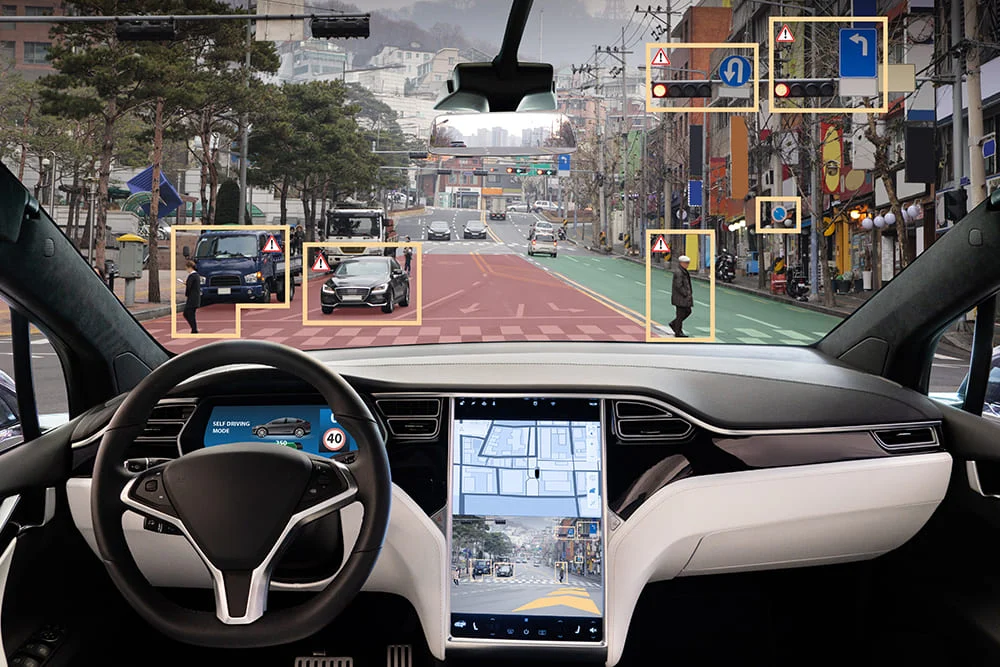The Future of Autonomous Driving: Where Are We Heading in 2024? Autonomous driving technology has witnessed significant advancements in recent years, with major players in the automotive and tech industries investing heavily in research and development. As we look ahead to 2024, the future of autonomous driving appears to be filled with promise and potential. From advancements in AI and machine learning to the development of sophisticated sensors and mapping technologies, the trajectory of autonomous driving seems to be heading towards a future where vehicles are not just self-driving, but also seamlessly integrated into smart city infrastructure. The potential impact on road safety, urban mobility, and the automotive industry as a whole is immense, making the future of autonomous driving a topic of great interest and anticipation.
In the coming years, the evolution of autonomous driving technology is expected to revolutionize the way we think about transportation. The integration of alternative energy sources, such as electric and hydrogen-powered vehicles, with autonomous driving systems is poised to redefine the automotive landscape. Additionally, the potential for autonomous vehicles to enable new business models, such as on-demand transportation services and last-mile delivery solutions, is an exciting prospect for both consumers and businesses. Furthermore, the ethical and legal implications of autonomous driving, including issues related to liability and decision-making algorithms, are areas of great interest and concern as we approach 2024.
The Current State of Autonomous Driving
As of 2024, autonomous driving technology has made significant advancements, with several companies testing self-driving vehicles on public roads. These vehicles are equipped with advanced sensors, cameras, and artificial intelligence algorithms that allow them to perceive and navigate the environment without human intervention. However, the technology is still in the testing and development phase, and widespread adoption is yet to be realized.
Despite the progress, there are still concerns about the safety and reliability of autonomous driving systems. Accidents involving self-driving vehicles have raised questions about their ability to handle complex real-world scenarios. Additionally, regulatory frameworks and legal implications need to be addressed before autonomous vehicles can be deployed on a large scale.
Challenges and Limitations of Autonomous Driving
While autonomous driving technology has the potential to revolutionize transportation, there are several challenges and limitations that need to be overcome. One of the biggest challenges is ensuring the safety of self-driving vehicles in all conditions, including adverse weather, complex urban environments, and interactions with human drivers and pedestrians. Additionally, the ethical and legal implications of autonomous vehicles making split-second decisions in potential accident scenarios are still being debated.
Another limitation is the high cost of the technology required for autonomous driving, including the sensors, computing power, and infrastructure needed to support it. This cost can be a barrier to widespread adoption, especially in developing countries or for individuals with limited financial resources.
The Impact of Autonomous Driving on Society
The widespread adoption of autonomous driving technology is expected to have a profound impact on society. It has the potential to improve road safety by reducing the number of accidents caused by human error. Additionally, autonomous vehicles could increase mobility for the elderly and people with disabilities, providing them with newfound independence and access to transportation.
However, the widespread adoption of autonomous driving may also have economic implications, particularly for professions that rely on driving, such as truck drivers, taxi drivers, and delivery services. The transition to autonomous vehicles may lead to job displacement and require retraining for those in the transportation industry.
The Role of Artificial Intelligence in Autonomous Driving
Artificial intelligence (AI) plays a crucial role in autonomous driving, as it enables vehicles to perceive and interpret their environment, make decisions, and navigate without human intervention. AI algorithms analyze data from sensors and cameras to identify objects, predict their behavior, and make real-time decisions to ensure safe and efficient driving.
Machine learning, a subset of AI, is used to train autonomous driving systems to recognize patterns and learn from experience, improving their ability to handle diverse driving conditions. As AI technology continues to advance, it is expected to enhance the capabilities of autonomous vehicles and make them more reliable and adaptable to changing environments.
The Future of Autonomous Driving Technology
In the coming years, autonomous driving technology is expected to continue evolving, with improvements in safety, reliability, and efficiency. Advances in sensor technology, such as lidar and radar, are anticipated to enhance the perception capabilities of self-driving vehicles, enabling them to navigate complex and dynamic environments with greater precision.
Furthermore, the development of connected infrastructure and vehicle-to-everything (V2X) communication is poised to improve the coordination and safety of autonomous driving systems. This technology allows vehicles to communicate with each other, as well as with traffic signals, road signs, and other elements of the transportation ecosystem, enabling smoother traffic flow and enhanced safety.
Regulatory and Ethical Considerations for Autonomous Driving
As autonomous driving technology advances, there is an urgent need to establish comprehensive regulatory frameworks to ensure the safety and ethical use of self-driving vehicles. These regulations need to address issues such as liability in accidents involving autonomous vehicles, data privacy and security, and the ethical decision-making processes of AI systems in potential accident scenarios.
Additionally, there is a need for international collaboration to establish consistent standards and regulations for autonomous driving, as the technology transcends national boundaries. It is essential for policymakers, industry stakeholders, and ethicists to work together to develop guidelines that prioritize safety, ethical decision-making, and the responsible deployment of autonomous driving technology.
Environmental and Energy Efficiency Implications of Autonomous Driving
Autonomous driving technology has the potential to improve energy efficiency and reduce the environmental impact of transportation. Through optimized driving patterns, reduced traffic congestion, and the potential for electric and shared autonomous vehicles, the overall energy consumption and carbon emissions from transportation could be lowered.
Furthermore, the development of autonomous freight transportation could lead to more efficient logistics and supply chain management, reducing the environmental footprint of cargo transportation. However, it is essential to consider the life cycle environmental impact of the technology and ensure that the benefits of autonomous driving outweigh any potential drawbacks.
Public Perception and Acceptance of Autonomous Driving
Public perception and acceptance of autonomous driving will play a crucial role in the widespread adoption of the technology. Building trust in the safety and reliability of self-driving vehicles, as well as addressing concerns about job displacement and ethical implications, will be essential for gaining public support.
Educational initiatives and transparent communication about the capabilities and limitations of autonomous driving technology can help alleviate fears and misconceptions. Additionally, providing opportunities for the public to experience and interact with autonomous vehicles in controlled environments can help foster acceptance and understanding of this transformative technology.
| Aspect | Current Status | Projected Progress in 2024 |
|---|---|---|
| Technology | Advanced driver-assistance systems (ADAS) are being widely adopted | Fully autonomous vehicles with improved AI and sensor technologies |
| Legislation | Regulations are being developed and updated to accommodate autonomous vehicles | More standardized laws and regulations for autonomous driving |
| Infrastructure | Infrastructure is being upgraded to support connected and autonomous vehicles | Further development of smart infrastructure to enhance autonomous driving capabilities |
| Consumer Adoption | Consumers are gradually accepting and embracing autonomous features | Increased trust and adoption of fully autonomous vehicles |
The future of autonomous driving in 2024 looks promising with the projected advancements in technology, legislation, infrastructure, and consumer adoption. With the continued development of AI, sensor technologies, and smart infrastructure, we can expect to see a significant increase in the presence of fully autonomous vehicles on the roads, supported by more standardized laws and regulations to ensure their safe and efficient integration into the transportation system.



